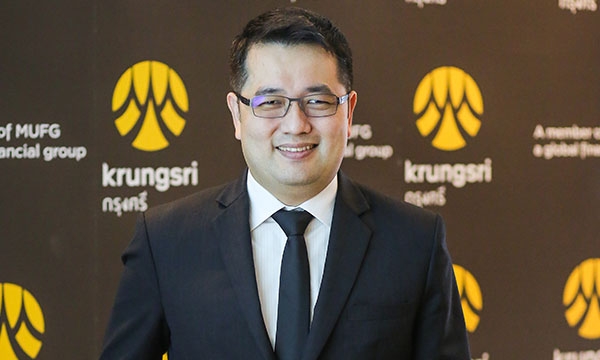
Krungsri's Nathapol Luepromchai on making sustainable returns from mortgage loans
It starts with developing a tool that enables staff to update the status of loan approval anytime, anywhere.
Bank of Ayudhya, more commonly referred to as Krungsri, revealed an impressive 5.9% loan growth in the first half of 2018 driven by auto hire purchases and mortgages. Whilst this showed how digitalisation in the bank’s morgage loan division has become one of the most important strategies under the bank’s medium-term business plan, it also unveiled a number of opportunities for the bank to leverage its mortgage business to create sustainable returns.
In an exclusive interview with Asian Banking & Finance, Nathapol Luepromchai, Krungsri’s head of mortgage loan division, talks about how the bank has developed a digital mortgage roadmap and how it will drive returns.
In a massive move to go digital within the banking sector, how is Krungsri developing its mortgage loan business to better serve its customers? Do you have current initiatives that other banks don’t offer?
Krungsri is determined to serve customer needs, especially through digital services. As part of our drive toward digital transformation, we have deployed agile working processes to promote the development of technology, business, and organisational culture.
We design new applications under the customer-centricity concept as our customers take part in designing solutions throughout the development process. At this initial stage, we aim to develop the digital business to enhance customer experience in a high-tech and hightouch approach.
For Krungsri mortgage loan, we continue to focus on building sustainable development, which will differentiate us from other banks. We aim to enhance knowledge and expertise for our staff, so that they will have a learning mindset for sustainable growth.
How important is digitalisation in Krungsri’s mortgage loan division?
Mortgage digitalisation is one of the most important strategies under our Medium-Term Business Plan 2018-2020 to create sustainable returns and enhance customer satisfaction, as well as reinforce our drive to become a main bank for our customers. Being a leader in digital banking is a key driver to help us better respond to changing lifestyle of customers and maintain a leading position in the mortgage loan market.
We have laid out a digital mortgage roadmap comprising four phases in the following:
First is using the agile deployment strategy to develop an application to enhance customer experience. The tool enables our staff to advise and update the status of mortgage loan approval process anytime, anywhere through mobile platforms such as Line, Facebook, WhatsApp, and email.
Second is developing new functions in mortgage-related applications developed by our business partners including property developers and search portals through the Open API (application programming interface) platform, which will enhance accessibility of our services for customers whenever they think about mortgage loans.
Third is deploying Big Data analytics and Robotic Process Automation (RPA) to advance our ability to approach target customers and increase customer service efficiency.
Finally, offering an application on demand, providing our customers with self-service lending toward a fullfledged digital journey.
How does Thailand’s property market look like and how is it affecting the bank’s mortgage loan business?
In 2018, Thailand’s property market is in a full recovery mode after a slowdown in recent years amidst the country’s slowing economy. The main driver for the recovery this year is the continued growth of the country’s GDP, which helps revive consumer confidence and encourage them to buy properties.
With the favourable economic environment, the mortgage loan business is experiencing a healthy growth. This year’s mortgage loan industry is expected to grow by 6%-10%, whilst the outstanding mortgage loans will rise by 6%-8%.
What are the latest trends and challenges in Thailand’s banking sector?
The most challenging issue for the banking sector is how banks can cope with technology changes that lead to digital lifestyles, digital platforms, and fintech. The digitalisation will change business models and the ways banks manage and serve customers. Banks are required to deliver financial products and services to retain maximum customer satisfaction with lower operating costs.
Meanwhile, banks need to explore ways for digital transformation and utilise the synergy between banks and fintech companies to stay competitive and support a sustainable growth.
What are three goals you will be focussing on in the coming year?
Over the next 12 months, we aim to maintain our leading position as the Tier One Mortgage player. We are also committed to improving our internal process to reduce operating costs and adopting digital solutions to enhance the quality of services through branches, sales staff, and business partners including Property Search Portal and real estate developers. This will eventually enable our customers to have a real digital experience through complete digital solutions and self-service mortgage lending.






















 Advertise
Advertise






